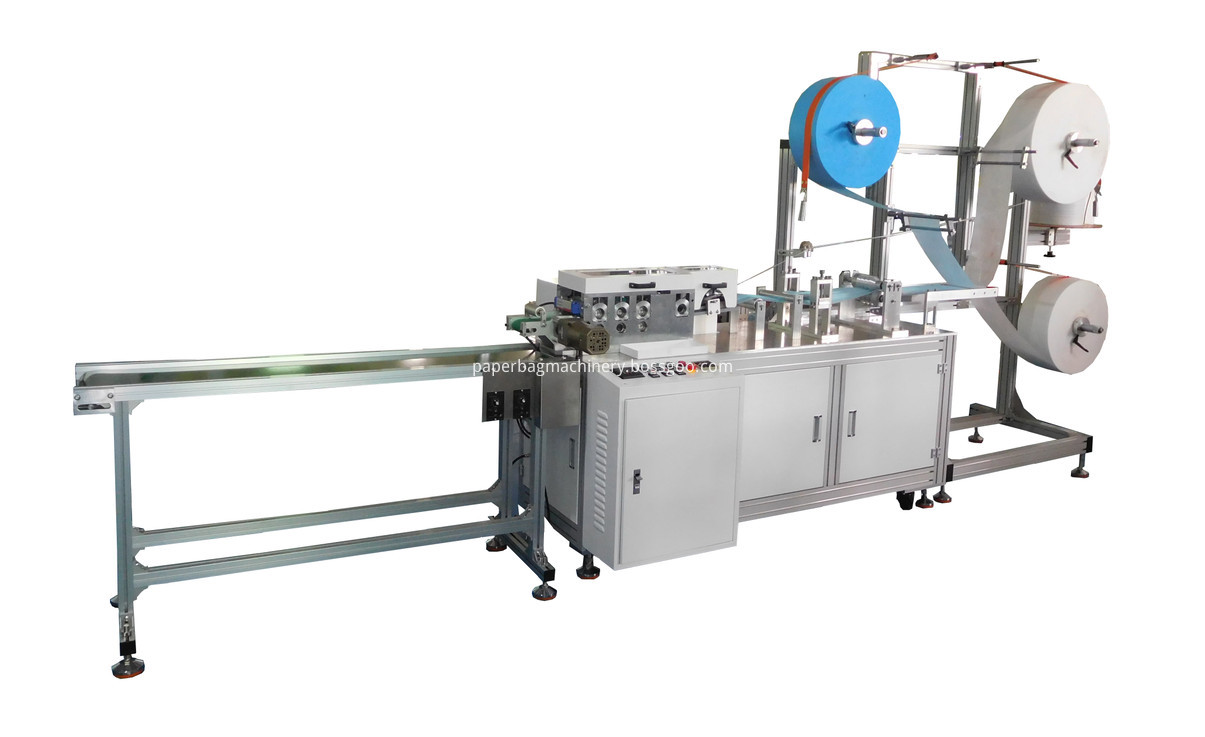On October 16, the five ministries and commissions jointly issued a notice requesting that the average fuel consumption management of passenger car enterprises be strengthened, and the average fuel consumption of passenger car products in China will be reduced to 6.9 liters/100 kilometers and 5 liters/100 in 2015 and 2020. Kilometer goal. The average fuel consumption assessment is very different from the fuel consumption of single vehicles in the past. This assessment method will encourage enterprises to produce more energy-saving products and promote the marketization of new energy vehicles.
1, FY-16A Flat Face Mask Machine
Introduction:
Semi automatic flat mask production line adopts advanced design, only need to put the raw material on the feeding rack, after the completion of the modulating, the machine can realize automatic production. It only need one person to operate and fully realize the whole process of automatic production. The equipment also adopts ultrasonic welding, which is beautiful, sanitary, environmental friendly.The output is 150-200 pcs/min. The length of nose bridge bar can be adjusted. The product size error is ±1mm.
Features:
1. High efficiency(150-200 pcs per minute) but in small size. The whole machine made of aluminum alloy, make a fine and classic look and with good rust protection and sturdiness.
2.With high output and 1-4 layers of mask blank producing adjustable.
3.With nose pin inserting in line.
Specification:
Machine Size: L3340*W800*H2000mm without conveyor
L4840*W800*H2000mm with conveyor
Mask blank size: 175*95mm
Nose bridge is inside the mask.
Output: 150-200pcs/min
Voltage: 220V
Power: 3KW
Net Weight: 400 KG
Installation and adjusting:
Factory will adjust the machine to best working status before delivery. Factory offer adjusting and installing video to custom and offer on-line technical support due to the Virus affecting.
face mask machine, facial mask machine, face mask making machine, face mask DongGuan FeiYang Packaging Machinery Equipment Co., Ltd , https://www.feiyang-machinery.com
The assessment method stipulates that in order to encourage the development of energy-saving and new-energy automobile products, when the statistical enterprises reach the national average fuel consumption target of passenger vehicles, the pure electric passenger vehicles, fuel cell passenger vehicles produced or imported by the enterprises, pure The electric drive mode is a plug-in hybrid passenger car with a driving range of 50 km or more. The actual value of the fuel consumption in the comprehensive working condition is calculated as zero, and is calculated as the sum of the accounting bases in five times; The actual fuel consumption is less than 2.8 liters / 100 kilometers (including) models (excluding pure electric, fuel cell passenger cars), and is included in the sum of the accounting bases in three times.
The average fuel consumption of automobiles represents the development level of the automobile industry. In order to reduce fuel consumption, efforts should be made to reduce the weight of automobiles. At present, in addition to high-strength steel sheets, aluminum materials, composite materials and even carbon fiber materials are used in large quantities. In order to reduce fuel consumption of automobiles, engine combustion efficiency should be improved. It promotes the development of VVT, gasoline engine direct injection, turbocharger, advanced clutch, advanced transmission and other technologies; in order to reduce vehicle fuel consumption, enterprises are encouraged to increase investment in research and development of new energy vehicles. Therefore, reducing vehicle fuel consumption can improve the overall level of the automotive industry.
China's automobile production and sales have already been the world's number one, but the fuel consumption and emissions of automobiles are far from the world's advanced level. Starting from January 1, 2008, China implemented the second-stage fuel consumption limit, which is basically the same as the 2002 world average fuel consumption level, and clearly lags behind the world average.
Even with the requirements of 6.9 liters in 2015, we still have a certain gap with the international advanced level. In 2010, the United States set new fuel consumption standards, requiring average fuel consumption for all models in 2016 to reach 15.1 kilometers per liter of oil (equivalent to 6.6 liters / 100 kilometers), and the average carbon dioxide emissions reduced to 155 grams per kilometer. Japan's average fuel consumption in 2009 was about 16.3 kilometers per liter. The government requested that it be raised to about 17 kilometers in 2015 and 20.3 kilometers in 2020, equivalent to 5.88 liters and 4.93 liters respectively.
The European standard is higher, requiring that the average carbon dioxide emissions of new vehicles in 2015 not exceed 130g/km, and not exceeding 95g/km in 2021. In terms of fuel consumption, the carbon dioxide emission limit in 2015 is equivalent to 5.6 liters of gasoline per mile or 4.9 liters. Diesel. The CO2 emission limit for 2021 is equivalent to 4.1 liters of gasoline or 3.6 liters of diesel per 100 kilometers. In this way, our 2020 indicators are not advanced.
According to the announcement jointly issued by the five ministries in September this year, the actual fuel consumption of the automobile industry in 2013 was 7.33 liters/100 kilometers. The 85 domestic passenger car manufacturers are 7.23 liters/100 kilometers. Among them, the average fuel consumption of 27 Chinese passenger car companies such as FAW, Huatai, Huachen Jinbei, Beiqi, Guangzhou Automobile and Lifan has not reached the standard. The average fuel consumption of 13 imported passenger car companies such as Chrysler China, GM China, Nissan China, Honda China and Renault (Beijing) is not up to standard. Therefore, to achieve the 2015 average assessment indicators, companies still need to make more efforts. 